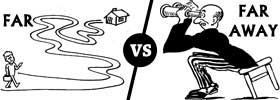Difference between Oven and Grill
Key Difference: An oven is a thermally insulated chamber that is used for heating, baking or drying a substance. It is most commonly used for cooking. Grills have been around since the invention of the fire. It works by placing the food on a wire mesh directly above the fire, allowing the fire to char cook the meat or vegetable.
Ovens have been in existence since the discovery of fire. They play an important part to our livelihood and well-being. There are various different kinds of ovens that are available in the market that makes it easier to cook, heat up food and various other things. Ovens are also used for other purposes such as glass-making, forging, ceramic making, creating heat, etc. Ovens and grill differ as they both prepare food in different ways. Ovens allow natural gas or electric power to produce heat to cook the food, while grills use coal and wood fire to char cook the food on an open wire grid. Electric grills cook food by converting electricity to heat.
 An oven is a thermally insulated chamber that is used for heating, baking or drying a substance. It is most commonly used for cooking. The earliest ovens can been dated back to 29,000 BC in Central Europe, where it was used for roasting, boiling and most commonly cooking mammoths. As the technology continued to increase, the construction of ovens got better and better. The advancement included creating an actual oven, making them portable, allowing for different types of cooking such as boiling, roasting, etc.
An oven is a thermally insulated chamber that is used for heating, baking or drying a substance. It is most commonly used for cooking. The earliest ovens can been dated back to 29,000 BC in Central Europe, where it was used for roasting, boiling and most commonly cooking mammoths. As the technology continued to increase, the construction of ovens got better and better. The advancement included creating an actual oven, making them portable, allowing for different types of cooking such as boiling, roasting, etc.
Findings from the Indus Valley Civilization show, in addition to cooking, these ovens were also used to create baked brick to construct sewers, pottery, glass-making and forging. These old ovens were powered by fire, wooden twigs and grass. The advancement of technology also saw ovens being powered by natural gas, wood, coal and electricity. Other advancements saw ovens with fire vents, ventilation windows and chimneys. Various different types of ovens including earth oven, ceramic oven, gas oven, electric oven, microwave oven and convection oven came into existence.
The breakthrough in ovens was seen with the development of the gas ovens, invented in the early 1900s; followed by the electric ovens, invented in the late 19th century, and the microwave ovens. The electric ovens, eliminates the need for dangerous flammable gas, while using resistor heating coils in order to provide heat. The microwave oven uses microwaves in order to produce heat. The microwaves excite the molecules of an object causing friction and producing heat. These ovens, excluding the microwave oven are known as conventional ovens.
 Grills have been around since the invention of the fire. It works by placing the food on a wire mesh directly above the fire, allowing the fire to char cook the meat or vegetable. Grill allows the fire to directly apply dry heat to the food, from above and/or below. The term grilling refers to applying dry heat to the surface of food, either from above or below, which allows the food to cook. There are four major different types of ways that a person can grill. Food can be grilled on an open wire grid over coal or fire, a grilling pan (similar to a sauce pan with raise ridges for leaving grid like marks), griddle (a flat plate with a heat source from below) and electric grill. This grill provides heat from both sides, while removing excess fat from the meat. Grilling is also known as broiling in the US and Canada, when the food receives heat from above.
Grills have been around since the invention of the fire. It works by placing the food on a wire mesh directly above the fire, allowing the fire to char cook the meat or vegetable. Grill allows the fire to directly apply dry heat to the food, from above and/or below. The term grilling refers to applying dry heat to the surface of food, either from above or below, which allows the food to cook. There are four major different types of ways that a person can grill. Food can be grilled on an open wire grid over coal or fire, a grilling pan (similar to a sauce pan with raise ridges for leaving grid like marks), griddle (a flat plate with a heat source from below) and electric grill. This grill provides heat from both sides, while removing excess fat from the meat. Grilling is also known as broiling in the US and Canada, when the food receives heat from above.
 In the open grilling, the food is directly placed on the wire grid and a fire is lit underneath. To many it is also known as barbeque; however, some people differentiate this term from grilling stating that barbeques take longer to cook compared to grilling. By placing the meat or vegetables directly on the fire, it gets a charred, distinct flavor. The sauce is then placed on top of the meat on the grill itself. The grill pan or griddle is placed on a source of heat such as stove top, after which food is placed on the pan, along with the sauce and spices. This maintains the juices and the flavor of the meat. The electric grill has a clam form, where it require opening from one side and is attached on the other side, the food is placed in to the grill, which has hot plates above and below. The meat is marinated and the lid is closed. The grill cooks the meat from both sides, eliminating the need to turn it over manually. The electric grill also removes the excess fat from the meat, making it a healthier option. In the open grill and the griddle, in addition to meat, various different vegetables can also be placed on the grill. However, the electric oven only cooks meat.
In the open grilling, the food is directly placed on the wire grid and a fire is lit underneath. To many it is also known as barbeque; however, some people differentiate this term from grilling stating that barbeques take longer to cook compared to grilling. By placing the meat or vegetables directly on the fire, it gets a charred, distinct flavor. The sauce is then placed on top of the meat on the grill itself. The grill pan or griddle is placed on a source of heat such as stove top, after which food is placed on the pan, along with the sauce and spices. This maintains the juices and the flavor of the meat. The electric grill has a clam form, where it require opening from one side and is attached on the other side, the food is placed in to the grill, which has hot plates above and below. The meat is marinated and the lid is closed. The grill cooks the meat from both sides, eliminating the need to turn it over manually. The electric grill also removes the excess fat from the meat, making it a healthier option. In the open grill and the griddle, in addition to meat, various different vegetables can also be placed on the grill. However, the electric oven only cooks meat.
|
|
Ovens |
Grill |
|
Runs on |
Electricity, natural gas (propane, butane, LPG), wood, etc. |
Coal, wood, gas or electricity. |
|
Price |
The price of the oven depends on initial set up charges and what it runs on. |
Depending on the grill, the price varies. Outdoor grills are a bit expensive, while electric grills are quite inexpensive. |
|
Heating |
Heating depends on the type of oven. While gas ovens heat up fast, electric ovens take a while in order to heat up. |
Heating is quite fast on the coal and wood ovens, while electric ones take a small amount of time to warm up. |
|
Cooking Time |
Cooking time is greater in conventional ovens. |
Cooking time is less in wood and coal grills. |
|
Economical |
Again the economic factor depends on the type of ovens. Gas ovens are commonly more economic in the long run. Electric ovens are more costly in the long run as electricity is more costly compared to natural gas. |
Economical factor depends on the type of grill and how much of it is used. For electric and wood and coal grills are quite expensive in the long run. However, the grilling pans are economical in the long run. |
|
Heat distribution |
Gas ovens distribute heat unevenly (more heat from top), while electric ovens have a more even heat distribution. |
Heating is quite uneven in the wood and coal grills. The electric grills have a more even heat distribution. |
|
Temperature Management |
Temperature is easier to manage in almost all off the ovens. |
Temperature must be managed manually in the gas, wood and coal grills, while it is automatically managed in the electric grills. |
|
Burners |
Runs on burners, coils, wood, coal, etc. |
No burners. |
|
Benefits |
The benefit of each oven depends on the type of oven it is. While electric ovens are easier to clean and cheaper to install; gas ovens are faster to heat up and are cheaper in the long run. |
The coal and wood grills have a better flavor and is quite juicy. However, the electric grills are much healthier as it allows the fat to seep out of the meat during cooking. |
|
Limitations |
Electric: expensive in the long run, slow heating, useless during power outage; Gas: harder to clean, expensive repairs, danger of leakage, expensive installation. |
Expensive in the long run in case of wood and coal grills. Electric grills and stove grills are cheaper. Wood and coal grills require an outdoor space for setting up. |
Image Courtesy: everydaynodaysoff.com, mydailyfindchicago.com, reviews.productwiki.com









Add new comment